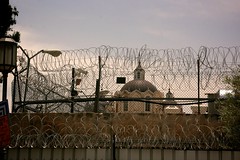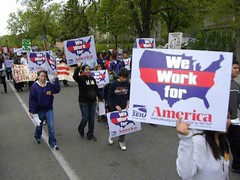As California grapples with a recent Supreme Court decision that mandates the state to reduce its prison population, sociologist Joshua Page examines an alliance that speaks out against prison reform.
This alliance, between Crime Victims United and the California Correctional Peace Officers Association, has existed for over two decades, as both organizations have lobbied for harsher sentences and other “tough on crime” policies.
The union had a strong personal interest in developing the victims group, which it realized could be an effective ally in achieving the guards’ policy objectives: enhancing members’ pay and benefits, keeping private prisons out of California and promoting “tough on crime” sentencing laws. Crime Victims United shares the union’s commitment to lengthy, harsh mandatory sentencing laws such as “three strikes.” The alliance has been good for both partners.
And the two groups have become a powerful force.
But their success has had a downside. When Crime Victims United turns complicated criminal justice matters into simple choices between helping and hurting victims, reasoned debate and thoughtful policymaking are necessarily constricted. Lawmakers are reluctant to oppose advocates. . .for fear that they will be tarred in the media and targeted in future elections. No politician wants to stand against a woman whose daughter was murdered and be deemed soft on crime. With financing from the guards, the victims group has the resources to seriously help or damage a politician’s image and career.
So while Crime Victims United provides support to people who suffer crimes, their actions may also cause harm.
By claiming pride of place as “the voice of victims,” the group marginalizes alternative victims’ voices. Some victims’ rights groups in the state maintain that vengeful, ultra-tough penal policies do not help victims of crime but simply create more suffering and resentment. These groups say that challenging offenders to take responsibility for the harm their crimes cause through restorative justice practices and helping prisoners develop the tools necessary to live crime-free lives help prevent future victims. These alternative voices reject zero-sum logic; they do not reflexively pit offenders against victims — or, in Nina Salarno Ashford’s words, the “bad people” against the “good citizens.”
According to Page, both groups will likely ensure their voices continue to be heard. “If policymakers continue to follow the voices of expressly punitive victims rights advocates and ignore the opinions of those who promote alternative, less punitive conceptions of justice, California will not shrink its $9-billion prison system or alleviate its correctional crisis. The status quo will prevail.”
Check out the entire Op-Ed in the Los Angeles Times.





 The
The 

 According to the
According to the